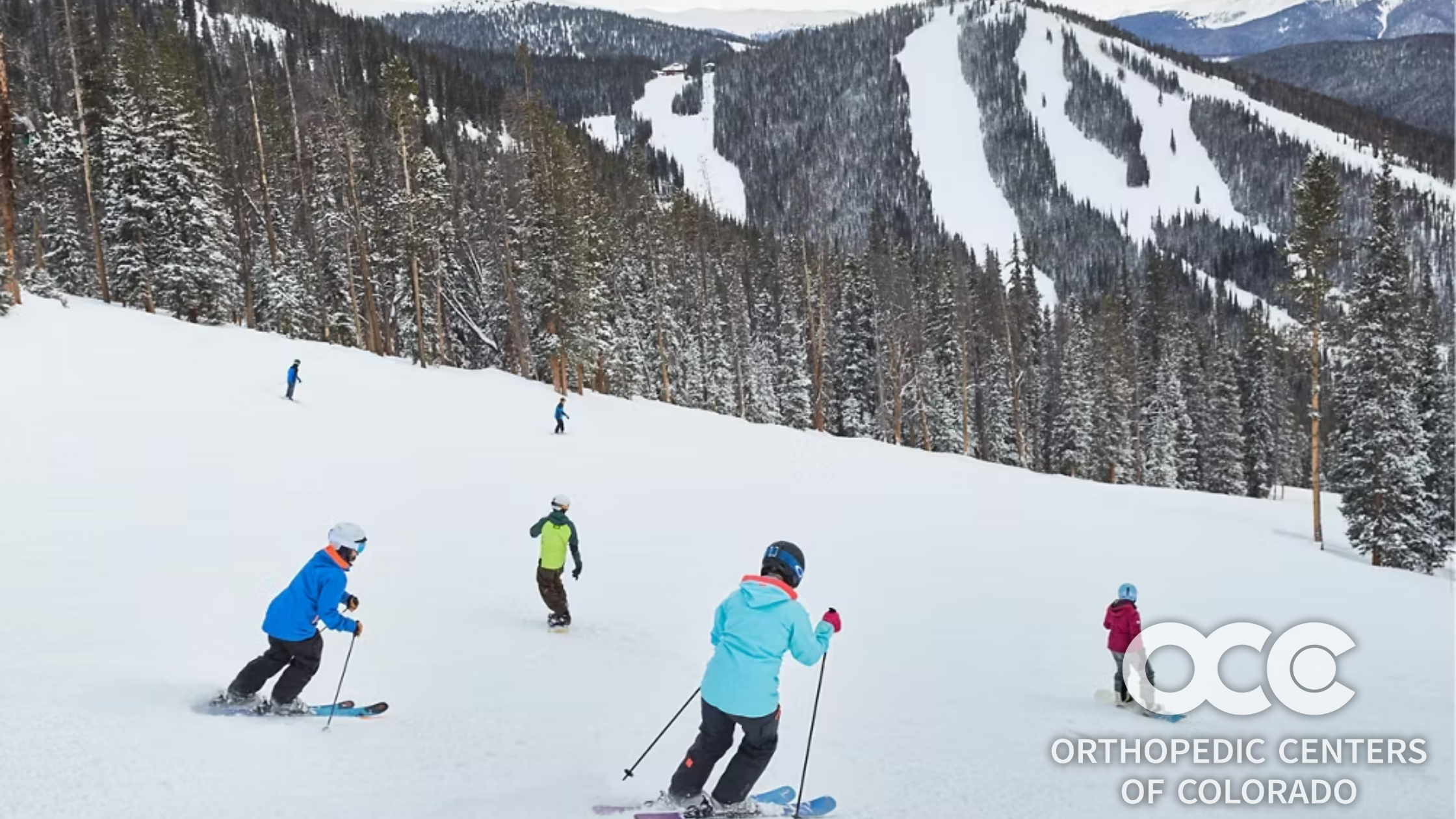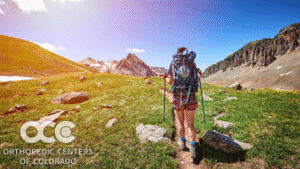When the first real snow hits Colorado, the mountains come alive. Skiers and snowboarders rush to the slopes, eager for that first perfect run of the season. But early-season enthusiasm often collides with early-season conditions — and that’s when injuries spike.
At Orthopedic Centers of Colorado, we consistently see a sharp increase in musculoskeletal injuries during the first 4–6 weeks of ski season. Icy terrain, unpredictable snowpack, and a long summer away from sport-specific conditioning all play a role. Understanding why these injuries occur — and how to prevent them — is essential for staying active, safe, and strong all winter long.
The Most Common Early-Season Injuries in Skiers and Snowboarders
Based on consistent injury patterns seen across our clinics, these are the top issues Coloradans face during early winter:
1. ACL Tears and Other Knee Injuries
Why it happens:
- Sudden twisting during a fall
- Leaning back on skis
- Binding release failure
- Weak quads and glutes
Symptoms:
A “pop,” swelling within hours, and instability when weight bearing.
Prevention Tips:
- Strengthen quads, glutes, and hamstrings 4–6 weeks pre-season
- Have bindings professionally adjusted
- Practice proper stance: forward, knees bent, hips centered
2. Wrist Fractures and Sprains
Why it happens:
Snowboarders instinctively use their hands to break a fall — placing enormous force on the outstretched wrist.
Symptoms:
Immediate pain with impact, swelling, and reduced motion.
Prevention Tips:
- Wear wrist guards (especially beginners)
- Practice falling by keeping arms tucked and using forearms, not hands
- Strengthen forearm muscles for improved impact tolerance
3. Shoulder Dislocations and Rotator Cuff Injuries
Why it happens:
Falls at high speed or awkward pole planting can overstretch or dislocate the shoulder joint.
Symptoms:
Sharp pain, limited range of motion, visible deformity (in dislocations).
Prevention Tips:
- Strengthen the rotator cuff and posterior shoulder
- Avoid reaching out with a straight arm during falls
- Keep poles at appropriate length to reduce shoulder strain
5. Ankle Injuries and Fractures
Most common in: Snowboarders
Why it happens:
Hard landings and twisting motions place stress on the outer ankle and talus bone.
Symptoms:
Pain on the outer ankle, trouble weight bearing, and swelling.
Prevention Tips:
- Ensure boots fit snugly and support the ankle
- Warm up ankles before hitting the lifts
- Strengthen lower-leg stabilizers (tibialis anterior, peroneals)
How to Reduce Your Risk Before You Hit the Slopes
Early-season injury prevention starts weeks before opening day. Here’s what our orthopedic specialists recommend:
Build Strength in Key Muscle Groups
Focus on:
- Quads & glutes: squats, wall sits, step-downs
- Hips: side steps, clamshells, single-leg balance
- Core: planks, dead bugs, rotational work
- Upper body: rotator cuff strengthening, pushups
Aim for 2–3 sessions per week.
Improve Mobility and Balance
Include:
- Ankle mobility exercises
- Hip flexor stretches
- Single-leg balance work
- Yoga or Pilates for stability
Tune and Check Gear
- Have bindings adjusted by a certified tech
- Check helmet for cracks
- Make sure boots still fit properly
- Tune skis/board for edge control
Ease Into the Season
The first few days back should be shorter, slower, and more technique-focused. Muscles and reflexes need time to readapt.
When to Seek Care
If you experience:
- Persistent swelling
- Joint instability
- Numbness or tingling
- Severe pain after a fall
- Symptoms that don’t improve within 48–72 hours
…it’s time to see a specialist. Early diagnosis is the key to avoiding long-term issues and getting back on the mountain faster.
Orthopedic Centers of Colorado has clinics throughout the state with fellowship-trained specialists in knee, shoulder, spine, foot & ankle, and sports medicine — ready to help you stay active all season. Our
also provides personalized rehabilitation and strength programs to support safe recovery and improve performance on and off the mountain.
Get Ready for a Safe, Strong, Colorado Ski Season
With preparation, awareness, and smart conditioning, you can dramatically reduce your risk of injury during those early-season runs. As the snow begins to fall and the excitement builds, make sure your body and equipment are as ready as your stoke level.
If you’d like us to help review symptoms, discuss a recent fall, or schedule an evaluation, our team is here for you.







